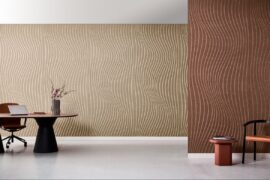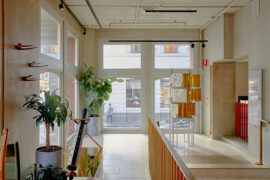The drive for better health across the commercial sector has one big hurdle to surpass: sitting. How can A+D get us up off our seats?
From the cubicle farms of the ‘80s to the trend of more casual spaces that you might see today, the architecture of the ideal workspace has been constantly rethought in order to provide changes to lighting, space and the freedom of movement. While the connections between these aspects, mental wellbeing and productivity are now clear, it was only recently that the relationship between office design and the physical wellbeing of its occupants began to be taken into account.
The claim that ‘sitting is the new smoking’ might seem to blow things out of proportion, but studies have shown that extended periods of sitting can lead to increased chances of heart disease, cancer, anxiety and depression, as well as a variety of other critical problems.
According to the local government initiative Better Health, for the ‘almost seventy per cent of Australian adults who can be classed as either sedentary or having low levels of physical activity’ here is definite room for improvement in the form of mixing up how you go about your day job.
Physical activity such as stretching or going for a walk during breaks, or even simply using the stairs instead of catching the lift, are a few ways to decrease the adverse effects of being seated for too long. And while this might alleviate a portion of our immobility, it still does little to change the average 6.3 hours a day we spend working while sitting at a desk.
Height adjustable desks, in conjunction with physical activity, allow users to quickly shift from a seated to standing position and back again, providing them with a mixture of postures throughout the day as recommended by health professionals.
And, Australia is at the frontline of this movement to integrate more height-adjustable desking systems into the professional world. As our local commercial sector continues to expand, the demand on our shores for health-aware design solutions has never been quite so high.
Well known for their holistic approach to client servicing and for delivering local design to a local market, Krost is a Sydney-based supplier & manufacturer of furnishings made exclusively for the commercial sector. Their Lift S range of height-adjustable workstations, desks and meeting tables are designed specifically in regards to the issue currently on the table, with manual winding and electronic versions available for choice of use.
Shifting between seated and standing positions within seconds, they have shown to reduce sitting time among users by twenty per cent. Available in a variety of typical layouts to maximise their potential within any office, and customers have the option of adding screens in case of privacy concerns.
On the other hand, for existing office fit outs where entire new workstations may not be the most practical solution, Krost has recently announced the Tonic range of adjustable height workstations as a cost-effective alternative to the Lift S. Tonic is a monitor and keyboard platform that can sit on any existing desktop, easily adjusted up to 520mm above desktop height via a lever mechanism located on either side of the monitor platform. Available in three different widths, Tonic has been designed to provide the greatest flexibility for the existing office, while improving both user comfort and physical wellbeing.
INDESIGN is on instagram
Follow @indesignlive
A searchable and comprehensive guide for specifying leading products and their suppliers
Keep up to date with the latest and greatest from our industry BFF's!

A longstanding partnership turns a historic city into a hub for emerging talent
The new range features slabs with warm, earthy palettes that lend a sense of organic luxury to every space.

In contemporary interiors, ensuring a sense of comfort and wellbeing means designing and specifying finishes and products that support all the senses.

Stylecraft and NGV call for furniture and lighting designs addressing small-space living, with $20,000 prize and commercial development opportunity.
The internet never sleeps! Here's the stuff you might have missed

At the World Design Congress in London, a simple idea threaded through two dense days: design is not an island. It moves inside wider systems of economics, policy, finance and ecology.

Carr’s largest residential project to date integrates concrete, steel mesh and landscape across 122 apartments in Melbourne’s Brunswick.